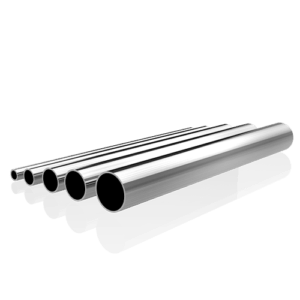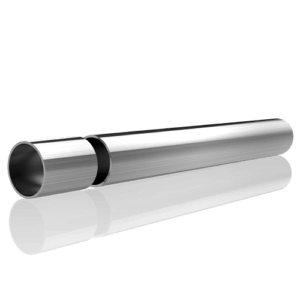Welcome to My Blog!
Before we dive into the content, I’d love for you to join me on my social media platforms where I share more insights, engage with the community, and post updates. Here’s how you can connect with me:
Facebook:https://www.facebook.com/profile.php?id=100090063158454
Now, let’s get started on our journey together. I hope you find the content here insightful, engaging, and valuable.
Introduction

Stainless steel tubing is a vital component in many industries, known for its durability, corrosion resistance, and aesthetic appeal. Understanding various stainless steel tubing sizes and their specific applications is essential for engineers, designers, and manufacturers. This blog explores popular stainless steel tubing sizes, their characteristics, and typical uses, providing a comprehensive guide for professionals in the field.
The Importance of Stainless Steel Tubing
Properties of Stainless Steel
Stainless steel is an alloy composed mainly of iron and chromium, which gives it exceptional corrosion resistance. This characteristic makes stainless steel tubing an ideal choice for environments exposed to moisture and chemicals. Additionally, its high tensile strength allows it to be used in demanding applications where structural integrity is crucial.
Applications of Stainless Steel Tubing
The versatility of stainless steel tubing sizes allows them to be employed in a wide range of applications, including:
- Construction: Used for structural supports and frameworks.
- Automotive: Commonly found in exhaust systems and fuel lines.
- Medical: Integral in the manufacturing of surgical instruments and implants.
- Food Processing: Utilized for piping systems that transport liquids and gases.
Popular Stainless Steel Tubing Sizes
Metric Sizes
Metric tubing sizes are widely used in global applications, particularly in Europe and Asia. The table below outlines standard metric sizes along with their typical applications.
| Size (mm) | Wall Thickness (mm) | Common Uses |
|---|---|---|
| 10 | 1.0 | Medical devices |
| 15 | 1.2 | Food processing equipment |
| 20 | 1.5 | Automotive fuel lines |
| 25 | 2.0 | Structural applications |
| 30 | 2.5 | HVAC systems |
Imperial Sizes
In regions like North America, imperial sizes are more commonly used. Below is a table detailing standard imperial sizes of stainless steel tubing and their applications.
| Size (inches) | Wall Thickness (inches) | Common Uses |
|---|---|---|
| 1/4 | 0.035 | Instrumentation lines |
| 1/2 | 0.065 | Water and gas lines |
| 3/4 | 0.065 | Hydraulic systems |
| 1 | 0.083 | Structural components |
| 2 | 0.120 | Handrails and frameworks |
Factors Influencing Tubing Size Selection
Pressure Requirements
The pressure rating required for specific applications heavily influences the selection of stainless steel tubing sizes. Higher pressure systems require thicker walls to safely contain the fluid and withstand operational stress.
Fluid Type
Different fluids can be corrosive to varying degrees. Choosing the correct tubing size and grade of stainless steel is essential to ensure longevity and safety within the system.
Environmental Conditions
Temperature, humidity, and exposure to chemicals can all impact the performance of stainless steel tubing. These environmental factors should be taken into account when selecting the appropriate stainless steel tubing sizes.
Common Grades of Stainless Steel Tubing
304 Stainless Steel
304 stainless steel is one of the most frequently used grades in tubing applications due to its excellent corrosion resistance. It is commonly found in food processing and kitchen equipment.
316 Stainless Steel
316 stainless steel includes molybdenum, enhancing its resistance to corrosion, especially from chlorides. This grade is often used in marine environments and chemical processing applications.
430 Stainless Steel
430 stainless steel is a ferritic grade offering moderate corrosion resistance. It is often utilized in automotive applications and decorative items, combining aesthetics with functionality.
Advantages of Using Stainless Steel Tubing
Corrosion Resistance
The primary advantage of stainless steel tubing is its inherent corrosion resistance, making it suitable for harsh and demanding environments.
Strength and Durability
Stainless steel’s high tensile strength allows it to withstand heavy loads, providing durability in structural applications.
Aesthetic Appeal
With its shiny finish and sleek lines, stainless steel tubing is often chosen for architectural and decorative projects, enhancing visual appeal.
Recyclability
Stainless steel is 100% recyclable, which contributes to its status as an environmentally friendly material choice.
Challenges in Selecting the Right Tubing Size
Cost Considerations
Stainless steel tubing can be more expensive than alternative materials like plastic or carbon steel. Budget constraints may limit options for some projects, requiring careful planning.
Availability of Sizes
Depending on the supplier, certain stainless steel tubing sizes may not be readily available, leading to potential delays. It is vital to communicate with suppliers about the availability of specific tubing sizes.
Future Trends in Stainless Steel Tubing

Innovations in Manufacturing
Advancements in manufacturing technology are making it easier to produce customized stainless steel tubing sizes tailored to meet specific project requirements.
Increasing Demand in Emerging Markets
As industries grow in emerging markets, the demand for stainless steel tubing is expected to rise, leading to more innovations and a broader range of tubing sizes being available.
Focus on Sustainability
With growing environmental awareness, manufacturers are increasingly focusing on sustainability, resulting in the development of more eco-friendly stainless steel tubing solutions.
Conclusion
In summary, understanding the various stainless steel tubing sizes and their applications is crucial for professionals across multiple industries. The properties of stainless steel, coupled with its versatility, make it a preferred choice for many applications. By considering factors such as pressure requirements, fluid types, and environmental conditions, you can select the most suitable stainless steel tubing sizes for your needs.
FAQ
What are the most common sizes of stainless steel tubing?
Common sizes vary, with metric sizes typically ranging from 10 mm to 30 mm and imperial sizes ranging from 1/4 inch to 2 inches.
How do I choose the right stainless steel tubing size?
To choose the appropriate size, consider pressure requirements, fluid type, and environmental conditions specific to your application.
Is stainless steel tubing recyclable?
Yes, stainless steel is completely recyclable, making it an environmentally friendly choice for many applications.
What is the difference between 304 and 316 stainless steel?
304 stainless steel is commonly used for general applications, while 316 stainless steel offers superior corrosion resistance, especially in marine environments.
Can stainless steel tubing be customized?
Yes, many manufacturers offer the ability to customize stainless steel tubing sizes and specifications to fit specific project requirements.
